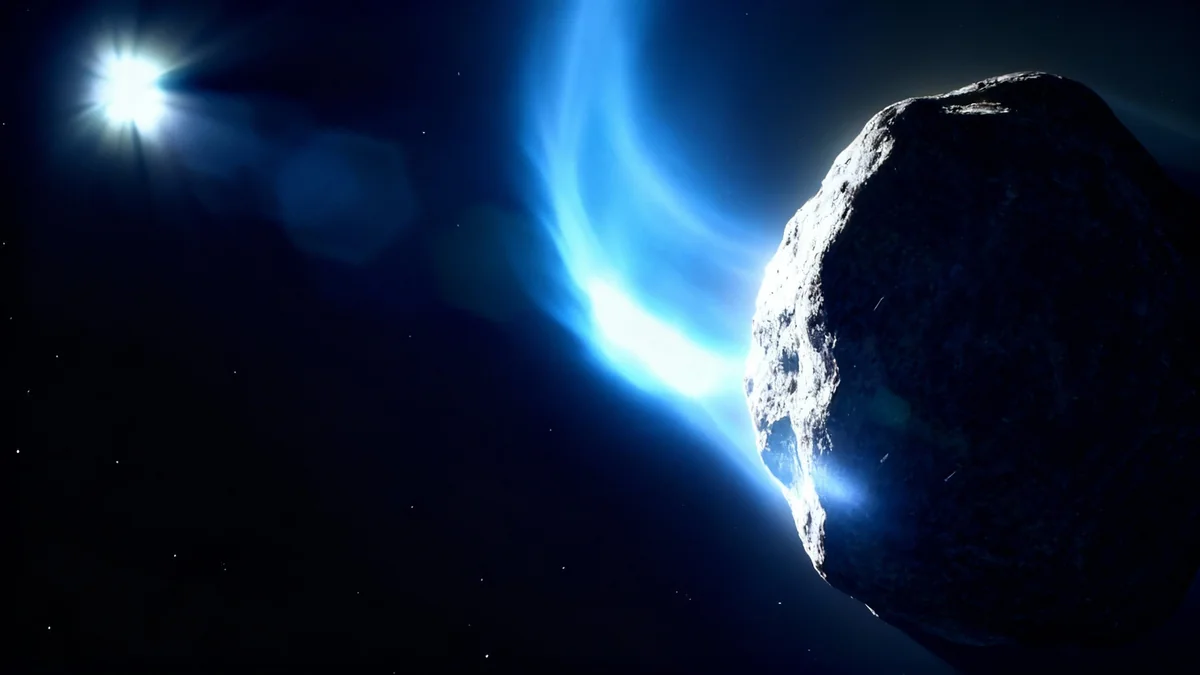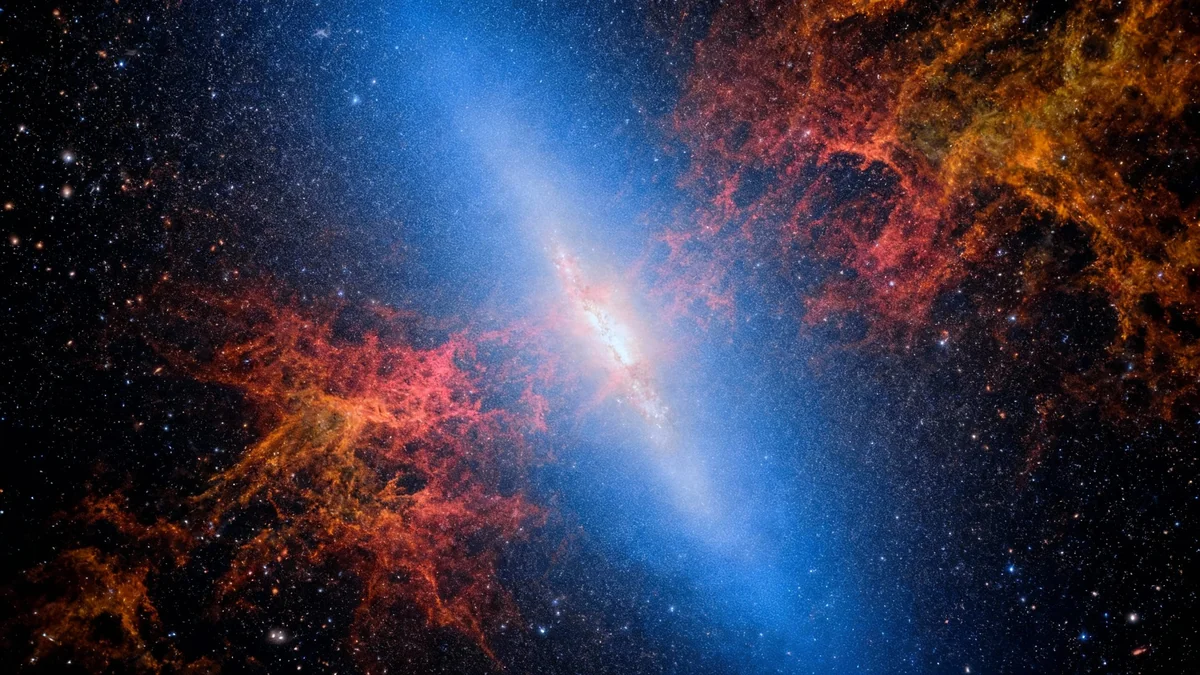Despite significant advancements in astronomy and physics, the universe continues to present profound questions that challenge our understanding. Scientists are actively investigating several persistent mysteries, from the fundamental properties of the cosmos to the existence of unseen objects in our own solar system. These unresolved issues drive modern scientific inquiry and highlight the vast scope of what remains to be discovered.
Each new observation provides more data, yet often deepens the complexity of these cosmic puzzles. From the rate of universal expansion to the nature of invisible matter, researchers are working to develop new theories and technologies to find answers.
Key Takeaways
- The Hubble Tension: Scientists have two primary methods for measuring the expansion rate of the universe, and their results do not agree.
- Dark Matter: An unidentified substance makes up approximately 85% of the matter in the universe, but it cannot be directly observed.
- Fast Radio Bursts (FRBs): These are extremely powerful but brief flashes of radio waves from deep space, and their exact origins are still debated.
- Hoag's Object: A rare and uniquely structured ring galaxy whose formation process remains an astronomical puzzle.
- Planet Nine: Evidence suggests a large, undiscovered planet may exist in the outer reaches of our solar system, but it has not yet been found.
1. The Hubble Constant Discrepancy
One of the most significant challenges in modern cosmology is the disagreement over how fast the universe is expanding. This rate, known as the Hubble constant, is a fundamental value for understanding the age and evolution of the cosmos. However, the two main methods used to measure it produce conflicting results.
Two Conflicting Measurements
The first method examines the early universe. By studying the cosmic microwave background (CMB)—the faint light left over from the Big Bang—scientists can predict the expansion rate. This approach consistently yields a value of approximately 67 kilometers per second per megaparsec.
The second method focuses on the modern universe. Astronomers measure the distances to relatively nearby objects with known brightness, such as Cepheid variable stars and Type Ia supernovae. These "standard candles" allow for a direct calculation of the expansion rate, which results in a value of about 73 kilometers per second per megaparsec.
What is a Megaparsec?
A megaparsec is a unit of distance used in astronomy, equal to one million parsecs or approximately 3.26 million light-years. The Hubble constant describes how much faster a galaxy appears to be moving away from us for every megaparsec of distance.
This persistent disagreement is known as the "Hubble tension." The chance that this is a simple measurement error is considered very low, as numerous independent studies have confirmed the conflicting values. The discrepancy suggests that there may be a fundamental flaw in our current understanding of the universe's physics.
2. The Search for Dark Matter
Observations of galaxies and galaxy clusters have revealed a major inconsistency. The visible matter—stars, gas, and dust—does not have enough gravitational pull to account for the observed motions of these structures. Galaxies rotate so quickly that they should fly apart, and galaxy clusters should not hold together.
Early Evidence for Missing Mass
The concept of dark matter dates back to the 1930s when astronomer Fritz Zwicky observed the Coma Cluster of galaxies. He noted that the galaxies were moving too fast for the cluster to remain bound by the gravity of its visible matter alone, leading him to propose the existence of "dunkle Materie," or dark matter.
Scientists theorize that an invisible substance, called dark matter, provides the extra gravitational force needed to hold these cosmic structures together. It is estimated that dark matter constitutes about 85% of all matter in the universe, while normal, or baryonic, matter makes up only 15%.
What Could It Be?
Despite decades of research, the identity of dark matter remains unknown. It does not appear to interact with light or any other form of electromagnetic radiation, making it impossible to detect directly. Leading candidates for what dark matter could be include:
- WIMPs (Weakly Interacting Massive Particles): Hypothetical particles that are heavy and interact only through gravity and the weak nuclear force.
- Axions: Very light, hypothetical particles proposed to solve a problem in particle physics.
- Primordial Black Holes: Black holes that may have formed in the very early universe, before the first stars.
Numerous experiments are underway in underground laboratories around the world, attempting to detect the faint signal of a dark matter particle interacting with normal matter. A definitive discovery would revolutionize physics.
3. The Enigma of Fast Radio Bursts
In 2007, astronomers analyzing archival data from 2001 discovered a powerful, fleeting signal from deep space. Lasting only a few milliseconds, this Fast Radio Burst (FRB) released an immense amount of energy, equivalent to what the Sun produces over many days.
Since that initial discovery, thousands of FRBs have been detected. Most of these bursts are one-time events, but a small fraction are known to repeat, sometimes with a discernible pattern. The majority originate in distant galaxies, making their exact sources difficult to pinpoint.
A Milky Way Discovery
A significant breakthrough occurred when an FRB was detected from within our own galaxy, the Milky Way. The source was identified as a magnetar, a type of neutron star with an incredibly powerful magnetic field. This confirmed that at least some FRBs are produced by magnetars.
However, the magnetar theory does not explain all FRBs. Some bursts come from environments where magnetars are not expected to exist, and it is still unclear why only a few of them repeat. The study of these mysterious signals is a rapidly evolving field in astronomy.
4. Unusual Cosmic Structures: Hoag's Object
The universe contains countless galaxies, but some have shapes that defy easy explanation. One of the most peculiar is Hoag's Object, a galaxy located about 600 million light-years from Earth. It is a rare type of galaxy known as a ring galaxy.
Hoag's Object features a nearly perfect ring of young, hot blue stars surrounding a central sphere of older, yellow stars. The ring has a diameter of about 120,000 light-years, while the central core is about 17,000 light-years across. A large, seemingly empty gap separates the two components.
The origin of this unique structure is a complete mystery. One theory suggests it was formed by a collision where a smaller galaxy passed through the center of a larger one, but the lack of any nearby remnant galaxy makes this unlikely. Another possibility involves a bar-shaped instability in a disk galaxy, but the core of Hoag's Object is spherical, not bar-shaped. Its nearly perfect symmetry remains a puzzle for astrophysicists.
5. The Question of Planet Nine
Within our own solar system, a compelling mystery is unfolding. Astronomers have observed that the orbits of several small, icy bodies in the distant Kuiper Belt are clustered together in an unusual way. This alignment suggests that their paths may be influenced by the gravity of a large, unseen object.
This hypothetical object has been named Planet Nine. Based on calculations, it is predicted to be about five times the mass of Earth and to follow a highly elongated orbit that takes it thousands of years to circle the Sun. Its average distance from the Sun would be several hundred times that of Earth.
An Ongoing Search
Despite extensive sky surveys, Planet Nine has not yet been directly observed. Its great distance and the faintness of the sunlight it would reflect make it extremely difficult to find. Some scientists argue that the clustering of the icy objects is not real but is instead an effect of observational bias—we have only found objects in the parts of the sky where we have looked most carefully.
The debate will only be settled when astronomers either find the planet or catalog enough distant objects to prove or disprove the statistical anomaly in their orbits. The search continues with powerful new telescopes, promising to shed light on the outer edges of our solar system.





